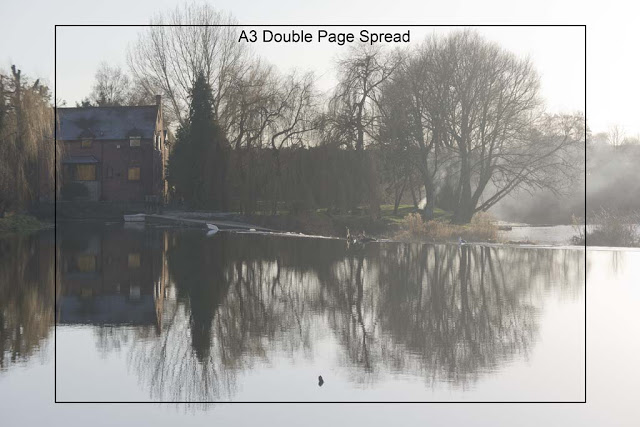As someone who is particularly concerned about file sizes. MP's and the commercial possibilities of my pictures, I thought I'd do this comparison of how megapixels correspond to publication sizes.
Here's a 12MP m4/3 shot and an A4 page, commonplace in UK magazines.
So plenty of size to spare there - assuming no cropping is required.
Here's how a 12MP m4/3 image would look on an A3 Double Page Spread. Not quite "enough" but in reality there would be no problem in upsizing the image.
Heres a 16MP m4/3 image on a A4 page.
So lots of "spare" pixels here and enough to do some cropping.
Heres a 16MP m4/3 file on an A3 Double Page Spread.
Again not quite enough to fill the pages, but once again, repro. houses and publishers wouldn't see any problem in upsizing, assuming again that no cropping was required.
So what about the Sony NEX-7?
So with this file size we're starting to see a fair amount of "extra" pixels to enable some significant cropping.
Finally the monster files created from a 36MP Nikon D800.
As you can see, we now get into a scenario when A4 vertical pages can be cropped from horizontal images and a double page spread has lots of options with a file size this big.
In reality, things actually get pushed quite a bit. I've had 5MP files used as A3 double page spreads and once had 50% of a 6MP file used as the front cover of a glossy travel magazine. Both looked absolutely fine.
I decided to show this because I'm often asked by photographers who want to start shooting for stock agencies, if their particular cameras are suitable for this. My usual answer is that 12MP and above is fine. However its a good idea to provide some options at that size. Publishers may be disinclined to crop a 12MP file too severely, so shooting wide, standard and telephoto options is often a good idea. As I've mentioned before its very rare for a picture of mine to get published without cropping, either in print or on the web. Designers and layout people tend to have pre-established shapes for where they want to put the images. As photographers we would maybe think that fitting the text around the pictures is a better idea, but that unfortunately happens very rarely.
So to take care of the above concerns, when I shoot on m4/3 I do often shoot multi images and stitch them together in Photoshop to produce larger files, which then offer options to clients.
So yesterday when I was out with my two Olympus Pens, I created images like the two below. I've included the image size data so you can see what I ended up with.
Olympus E-PL3 45mm f/1.8 Multi Images Panoramic Stitch
Olympus E-P2 12mm f/2 Multi Image Panoramic Stitch
Because of the kind of pictures I create, I am able to do this. However many picture taking situations don't allow these large stitched images to be created. So m4/3 is very suitable for what I do, but obviously wouldn't work for everyone.
However its worth remembering that the new Nikon and Canon "supercameras" the D4 and 1DX have relatively small pixel counts - 16MP and 18MP respectively. Since the target market for these cameras is professional photographers who will probably be looking at some kind of publication for their images, and I suspect in many cases will have their images cropped, then the question "How big is big enough?" becomes difficult to answer. However, its also worth remembering that people who buy pictures will probably have different tolerance levels to a one-off unrepeatable Pulitzer prize winning news image, and a sunlit landscape that could be shot by virtually anyone at any time.
So how many pixels is right for what you do, is a question that can only be answered individually. I've often said that if I was shooting exclusively for myself, a 12MP Pen would be all I would need. The fact that I'm shooting to make a living means that I will look beyond that, but I'm still able to use a camera like that, in a way that means I can enjoy the picture making process without compromising my professional needs. I think its worth pointing this out, and how and why I do what I do, as I can get somewhat carried away with my enthusiasm for m4/3, and it is a good idea occasionally to show that it has its limitations, and while those limitations are able to be worked around under certain circumstances, they are still there.








